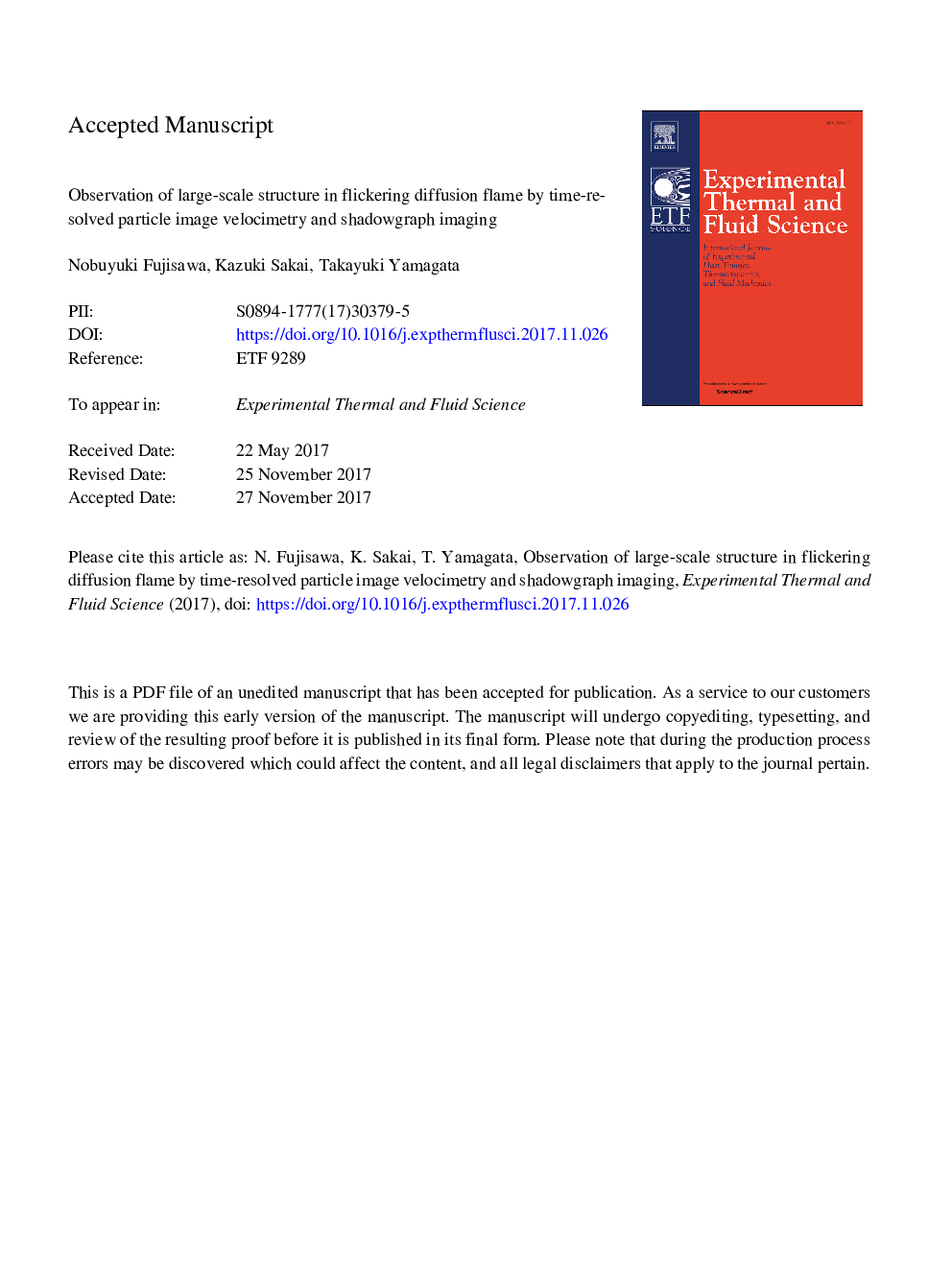| Article ID | Journal | Published Year | Pages | File Type |
|---|---|---|---|---|
| 7051840 | Experimental Thermal and Fluid Science | 2018 | 19 Pages |
Abstract
In order to understand the flow structure of a flickering flame, time-resolved observations are carried out of the velocity and density fields in a diffusion flame in co-flow using particle image velocimetry (PIV) and shadowgraph imaging, respectively. The PIV measurement combined with invalid velocity vector analysis using proper orthogonal decomposition (POD) allows for the high spatial resolution measurement of the velocity field in the flame, while the shadowgraph images show the high-temperature contour and soot formation of the flame. These experimental results indicate a periodic variation in the flow field and soot structure of the flickering flame. The observation of the velocity field shows that the periodic inflow and outflow are generated in the outer layer of the flame near the burner, which promotes the flow acceleration in the vertical direction leading to clip-off behavior. It is found that the vorticity contour evaluated from the velocity field matches well with the high-temperature contour observed in the shadowgraph images. Further examination of the flow structure is carried out using the first two POD modes, which demonstrate the presence of counter-rotating vortices in the outer flame contributing to stretching of the flame due to the clip-off motion in the flame.
Related Topics
Physical Sciences and Engineering
Chemical Engineering
Fluid Flow and Transfer Processes
Authors
Nobuyuki Fujisawa, Kazuki Sakai, Takayuki Yamagata,
